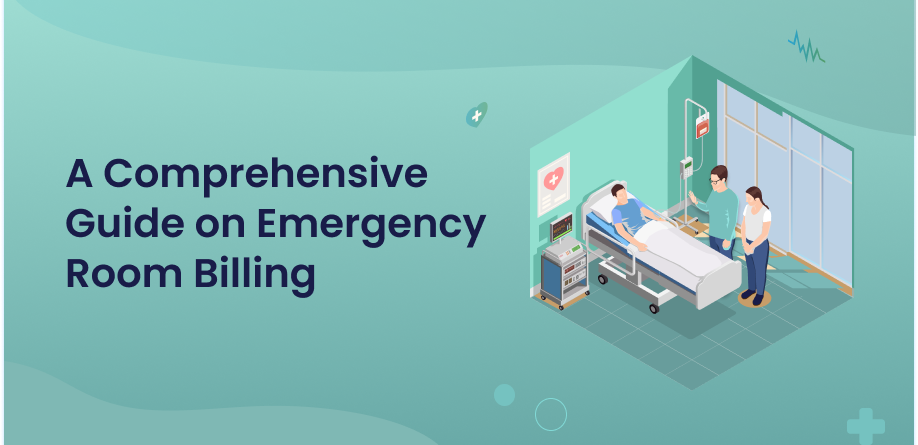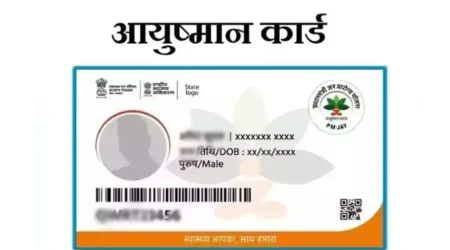Everything You Need to Know About Emergency Room Billing
The Centers for Disease Control and Prevention says that each year, about 139.8 million people go to emergency rooms in the U.S. That’s a lot of folks needing urgent medical help! Emergency rooms are important during crises because they give fast and crucial care. This blog will explain emergency room billing. It will cover the steps in the process, what it pays for, common misunderstandings, big problems, and ways to fix them.
What is emergency Room Billing
Emergency room billing is a complex process in which the hospital or medical billing companies, on behalf of a healthcare provider, send a detailed bill to the insurance company for the comprehensive care provided to a patient in the emergency room. This bill encompasses charges for utilizing the emergency room, consulting a doctor, undergoing tests, and any medication administered to the patient.
Getting Paid For Emergency Room Services
When you go to the emergency room, the staff there collect all your basic info, like your name and insurance details, along with what’s wrong and what they did to help.
After your visit, people called coders assign special codes to everything that happened. These codes ensure the bill is correct. They write down all this coded information in your medical records.
Then, the hospital sends the bill to your insurance company. They check if everything is okay and if they cover it. If it’s good, they send money to the hospital. They also look at what you might have to pay.
Your insurance company will send you a paper explaining what they paid for and what you might still owe.
Then, the hospital sends you a bill for what’s left. You have to pay this within a specific time.
If you can’t pay it all, you can talk to the hospital about paying overtime or getting help with the bill. You can also ask them to look again at any bills they said no to.
Everyone Gets Help in Emergencies: What Insurance Covers
If you have health insurance, you can go to the emergency room if you need medical help immediately. It doesn’t matter how old you are, your gender, or where you come from—you are still allowed to use the ER.
Your health insurance pays for urgent care because emergencies can happen unexpectedly. This includes going to the emergency room, paying for the doctors there, getting tests done, having procedures, and getting the necessary treatments.
A 2021 study by the Kaiser Family Foundation found that 94% of health insurance plans cover emergency room visits as part of the Affordable Care Act (ACA).
Common Myths About Emergency Room Billing
Myth 1
Emergency Room Services Only Cover Life-Threatening Situations
Truth: Health insurance isn’t just for life-threatening cases. It helps with various urgent situations, like severe injuries or sudden illnesses.
Myth 2
You Always Need Pre-Authorization
Truth: In emergencies, waiting for pre-authorization isn’t practical. Insurance plans skip this step for emergency visits, saving time for urgent care. Pre-authorization usually applies to non-emergency services.
Myth 3
Insurance Coverage Depends on Hospital Networks
Truth: Your health insurance covers emergency rooms no matter the hospital’s network status. You can go to the nearest hospital without worrying about network issues.
Did You Know?
According to a 2016 report from the British Medical Journal, 5%–10% of ER visits have errors. That’s over 10 million out of 140 million visits!
Independent Emergency Rooms: Making Billing Easier
Independent emergency rooms are medical centers that aren’t part of a hospital. They provide fast, quality care for all kinds of emergencies.
Advantages of Independent Emergency Rooms like Advanced ER
Easy to Get to and Use
Places like the Advanced ER are accessible to patients. They’re close to communities, so you don’t have to drive far when sick.
Clear Billing
Independent ERs are transparent about money. They tell patients exactly what they’re charging for emergency care.
One Fee for Everything
It’s easy to understand the money stuff at independent ERs. They charge one fee that covers many services, whereas in a hospital, patients get many different bills from different parts of the hospital.
Accepted Insurance
Independent ERs accept many insurance plans, so patients don’t have to worry about whether their insurance will cover them. They can use their insurance without any problems.
Special Care
Independent ERs can handle many different emergencies. They have special care from a skilled team and good medical tools.
Big Challenges for Emergency Room Billing
Problems
- Insurance Issues: Some insurance companies don’t cover emergency room visits, leaving patients to pay a lot out-of-pocket if they go to a doctor who isn’t in their network.
- Surprise Bills: Patients often get bills that are more than what their insurance covers, which can be a shock and cause financial stress.
- Quick Documentation: Emergency rooms must act fast, so it’s tough for doctors to keep track of all patient info. If they don’t document everything promptly, insurance might deny the claims.
- Hidden Costs: Patients usually don’t know how much their emergency visit will cost until they get the bill, which can be frustrating.
Solutions
- Laws to Stop Surprise Bills: We need laws to stop surprise bills so patients don’t get hit with unexpected charges. This would protect them from paying too much for out-of-network care.
- Clear Prices: Emergency rooms should be transparent about costs. They can do this by making standard price lists, online tools, and calculators that show patients what they’ll pay for different services.
Same Billing Rules: Emergency rooms should all use the same billing methods. This means using the same codes, showing costs clearly, and consistently billing patients.











Leave a Reply